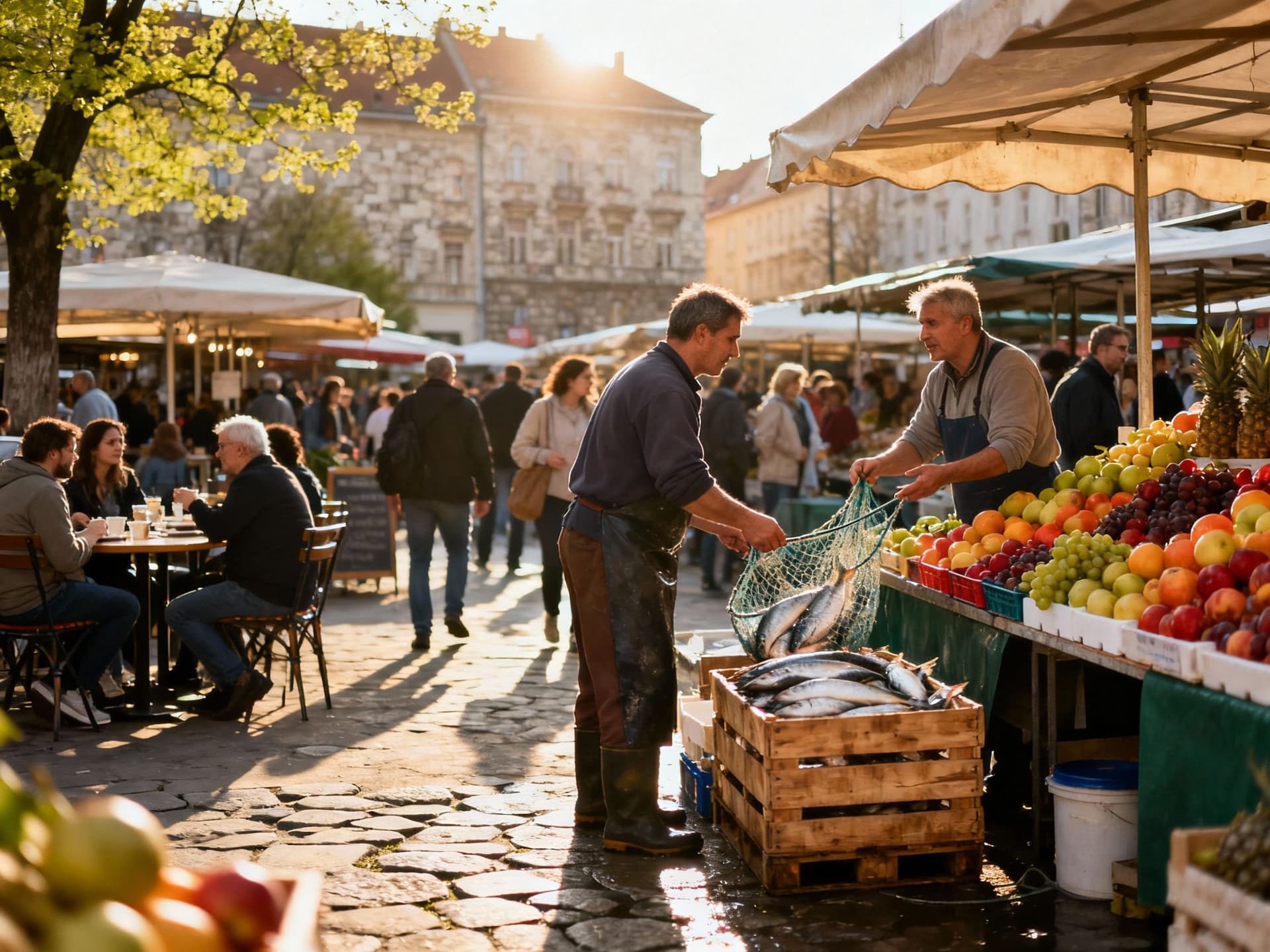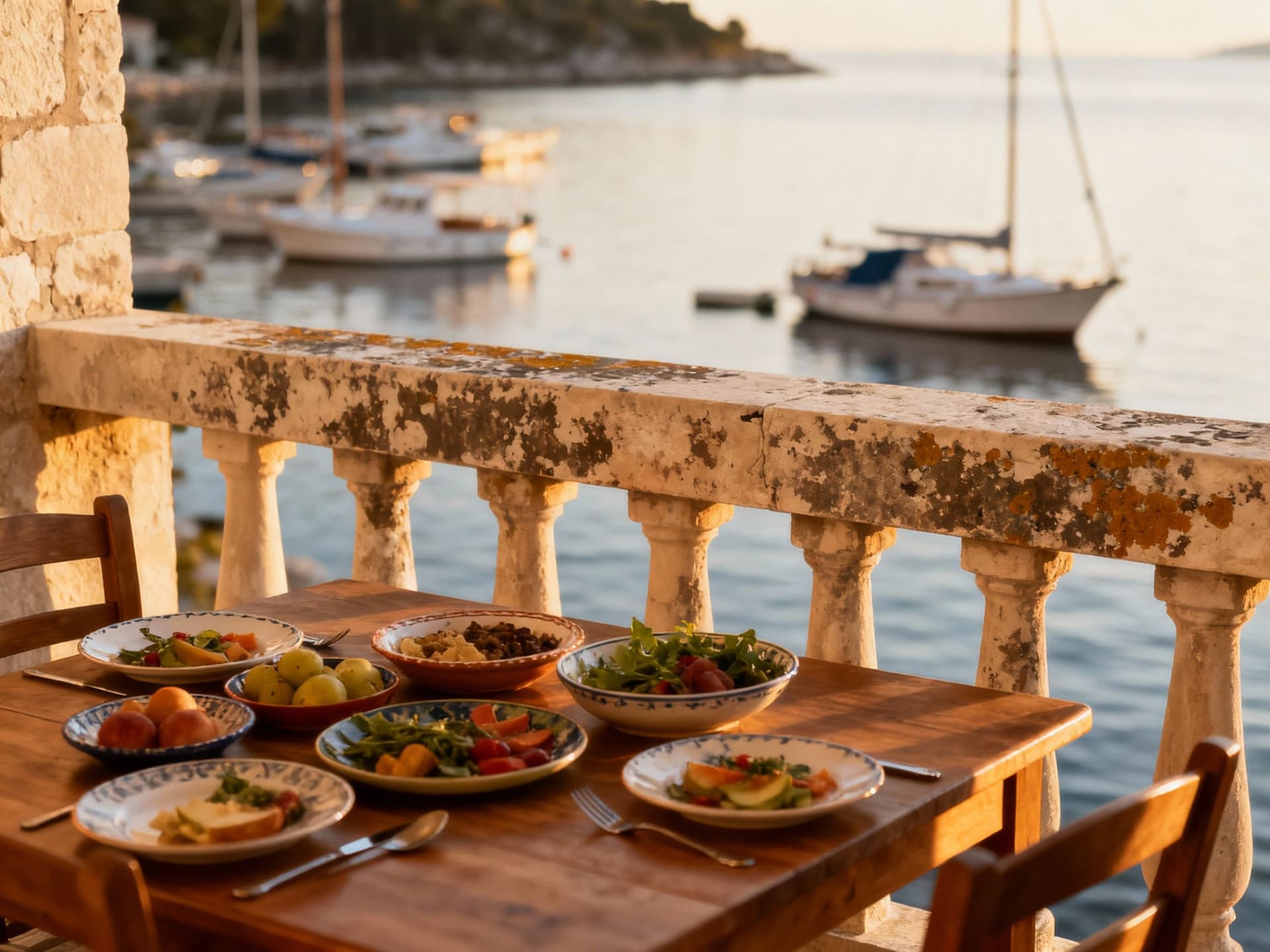When Croatia Looks 'Too Expensive' — Price Zones That Pay
Croatia isn’t uniformly expensive: coastal hotspots command premiums while inland and city pockets offer sensible yields—use net‑yield modelling and local data to find the sweet spot.
Imagine sipping espresso on Split’s Riva at 08:30, then driving 30 minutes inland to a stone village where a three‑bedroom costs a fraction of the waterfront price. Croatia’s coastline steals headlines — and wallets — but treating the country as a single ‘expensive’ market hides actionable pockets where yields and affordability diverge sharply. This piece blends the smell of fresh burek and sea salt with hard yield math so you can see where lifestyle and returns line up.
Living the Croatia lifestyle

Croatia balances two everyday rhythms: urban mornings in Zagreb’s cafés and relaxed coastal afternoons on pebble beaches. Coastal towns like Rovinj and Hvar pulse with seasonal tourism, boutique restaurants and yacht traffic; Zagreb offers a four‑season cultural calendar, coworking hubs and steady year‑round rental demand. For buyers the upshot is clear: lifestyle choice (island life, city life, rural tranquility) directly maps to rental seasonality and achievable yields.
Coast vs. Inland: signature neighbourhoods
Rovinj’s cobbled lanes and Pula’s Roman remains attract long‑stay tourists and premium short‑let rates; Split’s Old Town and Bačvice deliver high nightly prices but intense seasonality. Inland counties such as Vukovar‑Srijem and Požega‑Slavonia offer lower price per square metre and steadier long‑term rental prospects, often with higher gross yields on purchase price. In short: coastal charm brings capital appreciation potential; inland locations often deliver stronger cashflow per euro invested.
Food, markets and weekend life
Weekends in Croatia are about markets and the sea: Dolac market in Zagreb, Pula’s fish market at dawn, or a ferry‑run to the Pakleni Islands from Hvar. These rituals shape tenant expectations — kitchens that accommodate fresh‑market cooking and balconies for evening dining outperform anonymous, box‑style rentals in tenant satisfaction. When assessing an asset, match property features to local lifestyle cues (market proximity, outdoor space, walkable cafes) to protect occupancy and yield.
- Dolac market (Zagreb); Riva promenades (Split); Zlatni Rat beach (Brač); Stari Grad plain (Hvar); Pula Arena weekend events; Local konobas serving seasonal produce
Making the move: practical considerations that preserve yield

Lifestyle is the hook; taxes, seasonality and local regulation are the weight that determines net return. Croatia introduced property tax reforms intended to discourage short‑term empty units and favour long‑term leasing — a change that materially affects short‑let strategies and yield calculations. Use net yield (rental income after all recurring costs divided by total acquisition cost) rather than headline gross yields when comparing coastal short‑let opportunities to inland long‑term lets.
Property styles and what they mean for returns
Stone restorations on islands attract premium nightly rates but need higher capex for maintenance and utilities, compressing net yield. New apartments in Zagreb and Split are easier to manage, attract year‑round tenants and produce steadier rental income despite lower nightly peaks. With house price indices up materially since 2022, expect capital appreciation in many coastal towns but plan sensitivity analyses around higher financing costs and maintenance burdens.
Working with local experts who understand seasonality
A local agency that knows festival calendars, ferry timetables and municipal short‑letting rules saves months of trial and error. Look for agents who supply verified rental histories (months occupied, ADR — average daily rate — and operating costs). They should also model net yield scenarios (conservative, base, optimistic) rather than offering single headline figures.
- Run a 3‑scenario yield model: 1) conservative (60% seasonal occupancy), 2) base (75%), 3) optimistic (90%); include municipal taxes, utilities, management fees, and periodic maintenance. 2) Check local short‑let restrictions and tax exemptions for ten‑month rentals — these change net tax liability. 3) Price‑per‑m² sensitivity: compare coastal asking prices (often €3,000+/m² in prime towns) with inland averages under €1,200/m² to find mismatches between price and rental demand. 4) Validate demand with three sources: booking platforms, local agency rental records, and municipal tourism stats.
Insider knowledge: what expats wish they’d known
Expats often arrive expecting endless bargains outside the coast — then find rapid inflation even in smaller towns. Asking prices surged significantly between 2022–24 in many counties, so historical affordability gaps are closing fast. The practical takeaway: fast‑moving local markets reward prompt, evidence‑backed offers and punish long, sentimental negotiations.
Cultural integration and everyday life
Croatians value direct personal relationships; a polite local introduction (through a neighbour, lawyer or agent) accelerates utility connections and rental handovers. Basic Croatian phrases open doors in smaller towns, while English suffices in tourist centres. Expect slower administrative timelines than in some northern European countries — build time buffers into your acquisition and renovation schedules.
Long‑term lifestyle and portfolio considerations
If you want both yield and lifestyle, consider mixing one coastal asset (for capital growth) with an inland or Zagreb apartment (for stable yield). Croatia’s recent macro developments — EU integration, Schengen, and tax reforms — shift the risk profile: expect higher foreign demand and regulatory tightening in tourist hotspots. Treat Croatian property as a two‑legged strategy: selective appreciation plays plus steady rental cashflow elsewhere.
- Buy an inland rental for year‑round cashflow; reserve coastal purchases for targeted short‑term letting when net yield models show advantage. Use local audited rental records to underwrite forecasts. Prioritise properties within 10–15 minutes of transport hubs for better occupancy. Budget 5–12% of purchase price for immediate repairs in older stone houses. Confirm tax treatment of short‑lets vs. long‑lets with a Croatian tax advisor.
Conclusion: Croatia’s ‘expensive’ label is true in parts and misleading in others. Read the market by sub‑market — coast, islands, major city, inland county — and use conservative net yield models that account for seasonality and evolving taxes. If your goal is a lifestyle upgrade plus reliable returns, pair a local expert with a disciplined investment model and you’ll convert coastal romance into rational return.
Norwegian market analyst who relocated from Oslo to Mallorca in 2016, guiding Northern buyers through regulatory risk, currency hedging, and rentability.


